Birthplace of Naval Aviation
Introduction
Text-to-speech Audio
Images
Eugene Ely, first man to successfully take off from a ship.
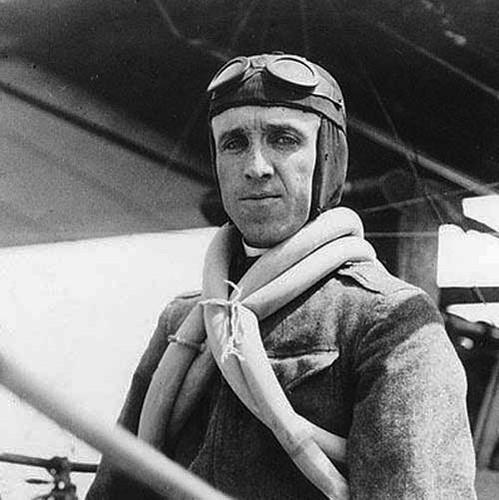
Ely's Curtiss biplane taking off from the USS Birmingham. Nov. 14, 1910.
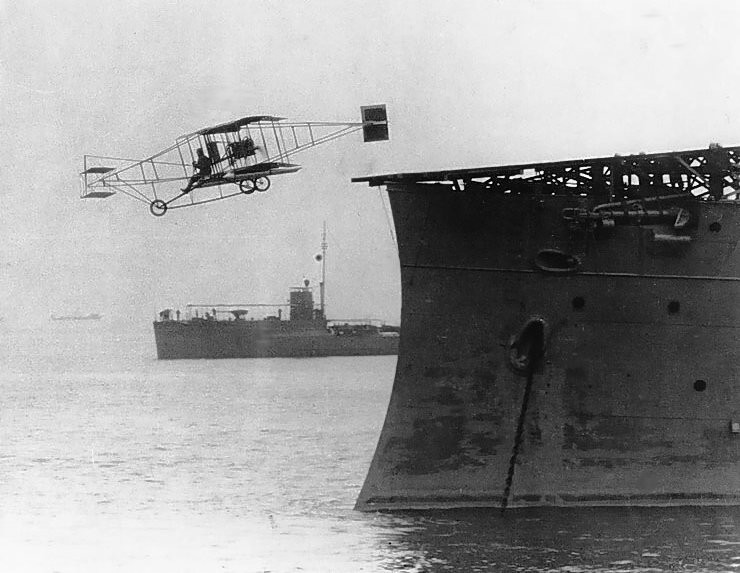
Ely's Curtiss biplane being hoisted aboard the USS Birmingham.
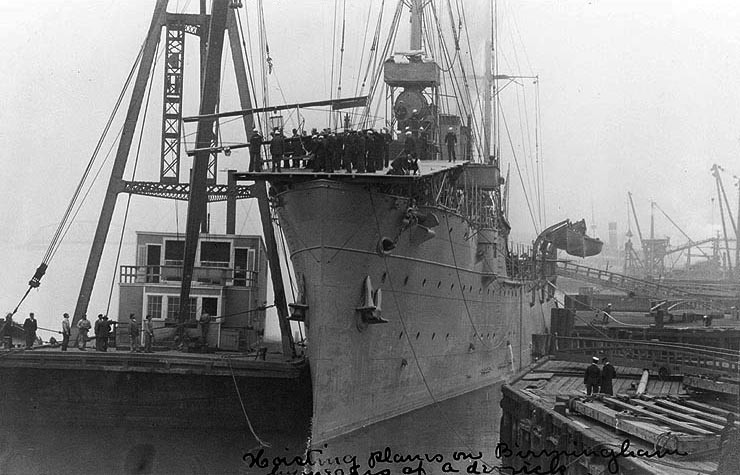
Glenn Curtis, American aviation pioneer, circa 1909. He provided the plane which successfully completed the test flight.
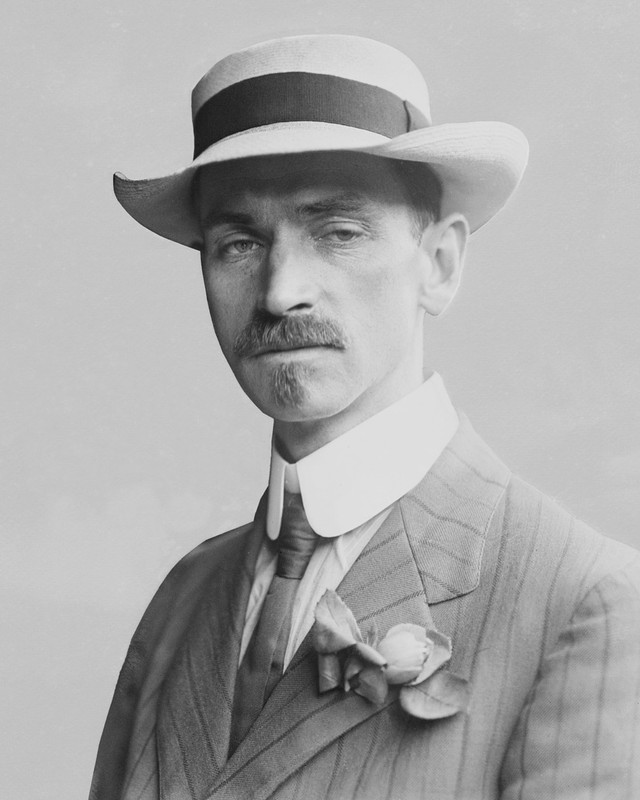
Captain Washington Irving Chambers, USN. Tasked at the time with investigating naval applications of aircraft, and instrumental in arranging the test flight of Eugene Ely.
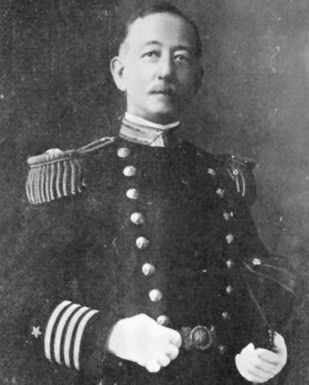
A Curtiss DIII Pusher biplane at the Smithsonian museum. Very similar to the plane used by Ely for his experimental flight.
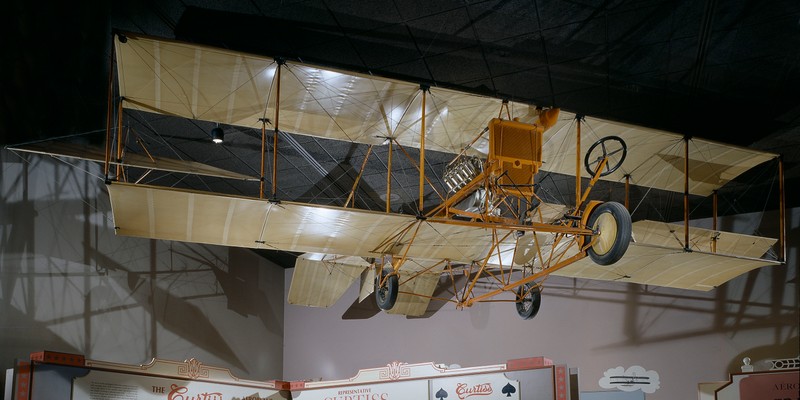
Ely in the cockpit of his plane two months later, during the test where he successfully landed on the deck of the USS Pennsylvania.
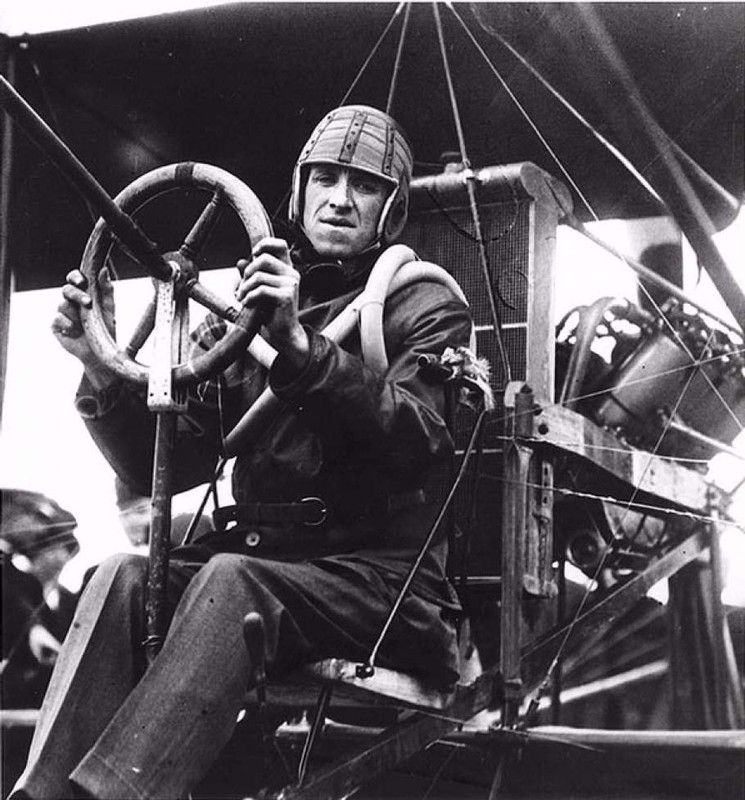
USS Birmingham with her special flight deck, built specifically for Eugene Ely's momentous experiment. USS Birmingham had launched only three years, and would be decommissioned in 1923 as the Navy downsized following the Washington Naval Treaty.
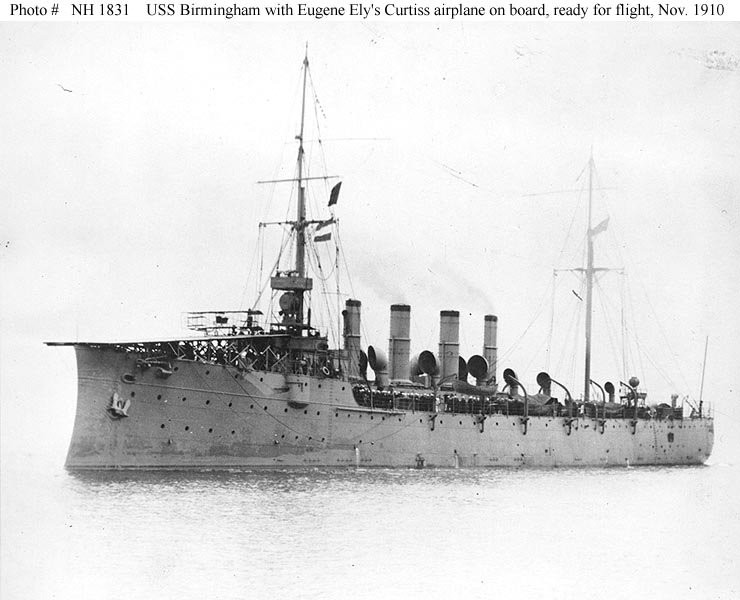
Backstory and Context
Text-to-speech Audio
"Aerial navigation proved today that it is a factor which must be dealt with in the naval tactics of the world’s future."
Such was the prognosis of the Indianapolis Star newspaper after witnessing Eugene Ely's historic flight in November 1910. The U.S. Army had already embraced the new military potential of the airplane when in 1909 it purchased the Wright Military Flyer--the world's first military airplane--but applications for other branches of the armed forces were not yet clear.
Nevertheless, the U.S. Navy was interested, and began experimenting with the possibility of naval aviation at bases in Maryland and California. A Navy Officer, Captain Washington Irving Chambers, was tasked "to observe everything that will be of use in the study of aviation and its influence upon the problems of naval warfare.” In October 1910, he encountered Glenn Curtiss and Eugene Ely at a meeting in New York.
Glenn Curtiss was an ambitious entrepreneur who had made his name inventing motorcycles in the early 1900s. Eventually contributing to the first successful American dirigible in 1904, he joined famed inventor Alexander Graham Bell and several others as part of the Aerial Experiment Association. In 1908, the group had the distinction of making the first "officially-recognized, pre-announced and publicly-observed flight in America." Despite the fame of the Wright Brothers and the Kitty Hawk, the brothers' flight had been private and relatively undocumented, causing much public suspicion. Glenn Curtiss made his record-breaking flight at the controls of his plane, the "June Bug," in full public view, and it was a resounding success.
In 1910 Curtiss met the similarly ambitious Eugene Ely, who had also gotten his start working with motorcycles. Earlier that year Ely had the opportunity to fly a Curtiss biplane belonging to his employer--and crashed it. But he was hooked on flying. He purchased the wreck from his employer, repaired it in a matter of months, and earned his pilot's license in October 1910. He and Curtiss collaborated on the test they devised with Captain Irving to fly from the deck of a Navy ship the following month.
The test was devised to prove that an aircraft could take off from the deck of a warship. For indeed some Naval leaders believed that ships could not only transport aircraft, but serve as mobile airbases, carrying and launching planes anywhere in the world. A wooden 83-foot ramp was constructed aboard the USS Birmingham, a light cruiser. While Ely did not expect to hit the water, floats were installed under the wings of his plane--just in case.
Ely's plane was hoisted on board the Birmingham on Nov. 14, 1910. Despite having only a few months of flight time under his belt, Ely proceeded with the experiment seemingly without hesitation.
The plane barely made its required speed at takeoff. In fact, the propeller and wheels skidded off the surface of the water. Saltwater sprayed onto Ely's goggles, obscuring his vision. His primary objective achieved--proving that a plane could take off from the deck of a ship--Ely decided to land at the earliest opportunity rather than making for the intended airfield at Norfolk. He touched down at Willoughby Spit, near Fort Monroe.
A grand success, the test inspired Secretary of the Navy George Meyer to call for further experimentation with shipborne aircraft. Two months later, Ely would prove that landing on a ship was also possible--this time in San Diego, when he landed his plane on a special wooden deck built on the USS Pennsylvania. Unfortunately, an aviation accident later that year would take his life.
These experiments paved the way for the later development of the aircraft carrier, a revolution in the projection of naval superiority and the global balance of power. Aircraft carriers would change the complexion of warfare in the Pacific during World War II, proving that the old model of turret-armed battleships was obsolete, and that aircraft carriers were queens of the ocean battlefields. Eugene Ely's fleet pioneered the concepts that led to current U.S. Naval doctrine and remains relevant to this day.
Cite This Entry
Tanner, Michael and Kyle Warmack. "Birthplace of Naval Aviation ." Clio: Your Guide to History. March 29, 2018. Accessed April 15, 2025. https://theclio.com/tour/292/6
Sources
2. N/A. "Birthplace of Naval Aviation Marker." Birthplace of Naval Aviation Marker. N.p., n.d. Web. 09 June 2016.
3. N/A. "Make a Donation." National Aviation Hall of Fame. N.p., n.d. Web. 09 June 2016.
4. Eugene Ely Makes Naval Aviation’s First Shipboard Launch. National Naval Aviation Museum. November 14, 2014. Accessed September 06, 2017. http://www.navalaviationmuseum.org/uncategorized/eugen-ely-makes-naval-aviations-first-shipboard-lau....
5. About the Man: Glenn H. Curtiss. Glenn H. Curtiss Museum. Accessed September 06, 2017. https://www.glennhcurtissmuseum.org/about-the-man-glenn-h-curtiss.php.

